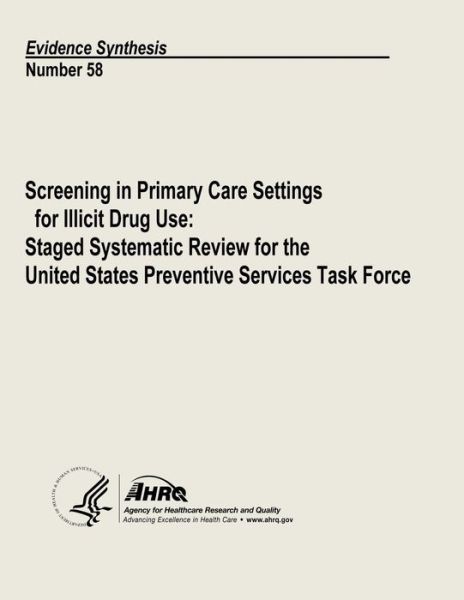
Vertel uw vrienden over dit artikel:
Screening for Cervical Cancer: a Systematic Evidence Review for the U.s. Preventive Services Task Force: Evidence Synthesis Number 86
U S Department of Heal Human Services
Screening for Cervical Cancer: a Systematic Evidence Review for the U.s. Preventive Services Task Force: Evidence Synthesis Number 86
U S Department of Heal Human Services
Publisher Marketing: We undertook this systematic review to assist the U. S. Preventive Services Task Force (USPSTF) in updating its 2003 recommendation on cervical cancer screening. During the planning phase of this evidence review on cervical cancer screening, the Agency for Healthcare Research and Quality decided to fund a separate modeling study to be conducted simultaneously. The USPSTF determined that the scope for both the systematic review and the modeling study would focus on important clinical questions that could inform effective use of screening in practice. This systematic review focuses on when to begin screening and on updating test accuracy and harms data on liquid-based cytology (LBC) and human papillomavirus (HPV) testing, either alone or in combination with cytology. The modeling study focuses on the effectiveness of strategies that use different ages at which to begin screening and different screening intervals. These two reports are intended to provide the USPSTF with complementary information to update its recommendation on cervical cancer screening. Using the USPSTF's methods we developed an analytic framework and five key questions (KQs) to guide our literature search. These KQs include: KQ1: When should cervical cancer screening begin, and does this vary by screening technology or by age, sexual history, or other patient characteristics? KQ2: To what extent does liquid-based cytology improve sensitivity, specificity, and diagnostic yield and reduce indeterminate results and inadequate samples compared to conventional cervical cytology? KQ3: What are the benefits of using HPV testing as a screening test, either alone or in combination with cytology, compared with not testing for HPV? KQ4: What are the harms of liquid-based cytology? KQ5: What are the harms of using HPV testing as a screening test, either alone or in combination with cytology?This report's scope differs from the 2002 USPSTF evidence report in several ways. KQ1, which was not included in the 2002 evidence report, addresses when cervical cancer screening should begin. Both LBC and automated screening technologies were evaluated in the prior review, and the evidence was determined to be insufficient to recommend for or against the use of these technologies in cervical cancer screening programs. For this review, we updated the evidence regarding LBC (KQ2) and focused on studies that evaluated either ThinPrep or SurePath, which are both FDA approved. The previous review evaluated the sensitivity and specificity of the HPV test for detection of histologically proven HSIL and LSIL. The authors also evaluated the use of the HPV test as a tool to facilitate triage of women with abnormal cytology. The current review expanded the scope of KQ3 to evaluate the evidence regarding the use of HPV testing in the following scenarios: 1. Primary screening with HPV test alone. 2. HPV testing with cytology triage of positive HPV (reflex cytology). 3. Combination HPV and cytology testing (co-testing). 4. Cytology testing with HPV triage of positive cytology (reflex HPV). We addressed one contextual question that evaluated the efficacy of screening in women older than age 65 years according to the USPSTF's specified nonsystematic approach. The previous review addressed this question systematically, and the USPSTF recommended against routinely screening women older than age 65 years, based on limited evidence regarding the benefits of continued screening in these women. We did not update the direct evidence for screening in women after a hysterectomy because the prior USPSTF recommendation to discontinue screening after hysterectomy for benign disease is clearly supported. Because the HPV vaccine is so new, data to determine the long-term efficacy of the vaccine or how the HPV vaccine will affect screening is limited. Therefore, the USPSTF did not include a KQ addressing the impact of the HPV vaccine on cervical cancer screening.
| Media | Boeken Paperback Book (Boek met zachte kaft en gelijmde rug) |
| Vrijgegeven | 18 april 2013 |
| ISBN13 | 9781484151976 |
| Uitgevers | Createspace |
| Pagina's | 278 |
| Afmetingen | 216 × 279 × 15 mm · 648 g |
Meer door U S Department of Heal Human Services
Bekijk alles van U S Department of Heal Human Services ( bijv. Paperback Book )

































